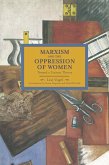Eric Blanc
Revolutionary Social Democracy
Working-Class Politics Across the Russian Empire (1882-1917)
Eric Blanc
Revolutionary Social Democracy
Working-Class Politics Across the Russian Empire (1882-1917)
- Broschiertes Buch
- Merkliste
- Auf die Merkliste
- Bewerten Bewerten
- Teilen
- Produkt teilen
- Produkterinnerung
- Produkterinnerung
A groundbreaking study that shatters longstanding assumptions about the nature and origins of the Russian Revolution
Andere Kunden interessierten sich auch für
![Marxism and Social Movements Marxism and Social Movements]() Marxism and Social Movements42,99 €
Marxism and Social Movements42,99 €![Revolutionary Rehearsals in the Neoliberal Age Revolutionary Rehearsals in the Neoliberal Age]() Revolutionary Rehearsals in the Neoliberal Age28,99 €
Revolutionary Rehearsals in the Neoliberal Age28,99 €![Marx, Women, and Capitalist Social Reproduction Marx, Women, and Capitalist Social Reproduction]() Martha E. GimenezMarx, Women, and Capitalist Social Reproduction45,99 €
Martha E. GimenezMarx, Women, and Capitalist Social Reproduction45,99 €![The German Left and the Weimar Republic The German Left and the Weimar Republic]() Ben FowkesThe German Left and the Weimar Republic32,99 €
Ben FowkesThe German Left and the Weimar Republic32,99 €![Theory as History Theory as History]() Jarius BanajiTheory as History43,99 €
Jarius BanajiTheory as History43,99 €![Marxism and the Oppression of Women Marxism and the Oppression of Women]() Lise VogelMarxism and the Oppression of Women38,99 €
Lise VogelMarxism and the Oppression of Women38,99 €![Selected Political and Economic Writings of Eugen Varga Selected Political and Economic Writings of Eugen Varga]() Eugen VargaSelected Political and Economic Writings of Eugen Varga76,99 €
Eugen VargaSelected Political and Economic Writings of Eugen Varga76,99 €-
-
-
A groundbreaking study that shatters longstanding assumptions about the nature and origins of the Russian Revolution
Hinweis: Dieser Artikel kann nur an eine deutsche Lieferadresse ausgeliefert werden.
Hinweis: Dieser Artikel kann nur an eine deutsche Lieferadresse ausgeliefert werden.
Produktdetails
- Produktdetails
- Historical Materialism
- Verlag: Haymarket Books
- Seitenzahl: 469
- Erscheinungstermin: 17. Juni 2022
- Englisch
- Abmessung: 153mm x 228mm x 30mm
- Gewicht: 692g
- ISBN-13: 9781642597646
- ISBN-10: 1642597643
- Artikelnr.: 63124259
- Herstellerkennzeichnung
- Libri GmbH
- Europaallee 1
- 36244 Bad Hersfeld
- gpsr@libri.de
- Historical Materialism
- Verlag: Haymarket Books
- Seitenzahl: 469
- Erscheinungstermin: 17. Juni 2022
- Englisch
- Abmessung: 153mm x 228mm x 30mm
- Gewicht: 692g
- ISBN-13: 9781642597646
- ISBN-10: 1642597643
- Artikelnr.: 63124259
- Herstellerkennzeichnung
- Libri GmbH
- Europaallee 1
- 36244 Bad Hersfeld
- gpsr@libri.de
Eric Blanc is a doctoral student in sociology at New York University and the author of Red State Revolt: The Teachers' Strike Wave and Working-Class Politics (Verso 2019).
Acknowledgements
List of Tables
Introduction
1 Bringing in the Borderlands
2 Strategic Continuities and Ruptures
3 Method, Structure, Sources
1 The Social Context
1 The Workers’ Movement
2 The Unique Impact of Orthodox Marxism
3 Socialist Political Cultures
2 Revolutionary Social Democracy: An Overview
1 The ABC s of Revolutionary Social Democracy
2 Strategy and Tactics in Germany and Russia
3 Intellectuals and Workers
1 Intellectuals and the Tensions of Class Formation
2 Intellectuals and Workers (1905–17)
4 Organisation, Mass Action, and Electoral Work
1 Socialist Organisation in Finland
2 Illegal Organising in Tsarist Russia
3 The Bolshevik-Menshevik Split
4 The First Mass Strike Debates (1903–04)
5 Mass Action and Organisation in 1905
6 Party Organisation and Mass Action (1906–14)
7 War and Revolution
8 Mass Organisation and Action in Finland: 1917–18
5 Working-Class Hegemony
1 Analysing Liberalism
2 Tactics Towards Liberals
3 The Bund versus Zionism (1897–1904)
4 The PPS and the National Democrats Before 1905
5 Class Independence in Finland
6 Early Russian Marxism and Liberals
7 Working-Class Hegemony (1905–16)
8 Proletarian Hegemony and Liberals (1906–16)
6 Working-Class Unity
1 United Front Practices Before 1905
2 Workers’ Unity and the 1905 Revolution
3 Implementing the United Front (1906–18)
4 Disunity in Europe and Poland
7 The Party Question
1 The German SPD Model
2 Finland’s Social Democracy
3 The Normalcy of Splits in Underground Russia
4 The Split of Polish Socialism
5 The Bolshevik-Menshevik Split
8 Democracy, the State, and the Finnish Revolution
1 Critique of Bourgeois Democracy
2 The Socialist Revolution
3 The State and Revolution in Finland (1917–18)
9 The Autocratic State and Revolution: 1905
1 State Power and Marxist Strategy in 1905
2 The Practice of Revolutionary Government in 1905
3 Socialist Transformation in Russia
4 International Revolution
10 The State and Revolution in Russia, Ukraine, and Poland: 1917–19
1 Moderate Socialists and Dual Power in 1917
2 Moderates Join the Government
3 Russian Moderate Socialists in the October Revolution
4 Moderate Socialists in Ukraine: 1917–18
5 Moderate Socialism in Poland: 1918–19
6 Bolsheviks and State Power: February–March 1917
7 Breaking with the Bourgeoisie: April–October
Epilogue: An International Revolution Defeated
1 Civil War and Authoritarianism
2 International Revolution
3 Impasse in the Imperial Periphery
Bibliography
Index
List of Tables
Introduction
1 Bringing in the Borderlands
2 Strategic Continuities and Ruptures
3 Method, Structure, Sources
1 The Social Context
1 The Workers’ Movement
2 The Unique Impact of Orthodox Marxism
3 Socialist Political Cultures
2 Revolutionary Social Democracy: An Overview
1 The ABC s of Revolutionary Social Democracy
2 Strategy and Tactics in Germany and Russia
3 Intellectuals and Workers
1 Intellectuals and the Tensions of Class Formation
2 Intellectuals and Workers (1905–17)
4 Organisation, Mass Action, and Electoral Work
1 Socialist Organisation in Finland
2 Illegal Organising in Tsarist Russia
3 The Bolshevik-Menshevik Split
4 The First Mass Strike Debates (1903–04)
5 Mass Action and Organisation in 1905
6 Party Organisation and Mass Action (1906–14)
7 War and Revolution
8 Mass Organisation and Action in Finland: 1917–18
5 Working-Class Hegemony
1 Analysing Liberalism
2 Tactics Towards Liberals
3 The Bund versus Zionism (1897–1904)
4 The PPS and the National Democrats Before 1905
5 Class Independence in Finland
6 Early Russian Marxism and Liberals
7 Working-Class Hegemony (1905–16)
8 Proletarian Hegemony and Liberals (1906–16)
6 Working-Class Unity
1 United Front Practices Before 1905
2 Workers’ Unity and the 1905 Revolution
3 Implementing the United Front (1906–18)
4 Disunity in Europe and Poland
7 The Party Question
1 The German SPD Model
2 Finland’s Social Democracy
3 The Normalcy of Splits in Underground Russia
4 The Split of Polish Socialism
5 The Bolshevik-Menshevik Split
8 Democracy, the State, and the Finnish Revolution
1 Critique of Bourgeois Democracy
2 The Socialist Revolution
3 The State and Revolution in Finland (1917–18)
9 The Autocratic State and Revolution: 1905
1 State Power and Marxist Strategy in 1905
2 The Practice of Revolutionary Government in 1905
3 Socialist Transformation in Russia
4 International Revolution
10 The State and Revolution in Russia, Ukraine, and Poland: 1917–19
1 Moderate Socialists and Dual Power in 1917
2 Moderates Join the Government
3 Russian Moderate Socialists in the October Revolution
4 Moderate Socialists in Ukraine: 1917–18
5 Moderate Socialism in Poland: 1918–19
6 Bolsheviks and State Power: February–March 1917
7 Breaking with the Bourgeoisie: April–October
Epilogue: An International Revolution Defeated
1 Civil War and Authoritarianism
2 International Revolution
3 Impasse in the Imperial Periphery
Bibliography
Index
Acknowledgements
List of Tables
Introduction
1 Bringing in the Borderlands
2 Strategic Continuities and Ruptures
3 Method, Structure, Sources
1 The Social Context
1 The Workers’ Movement
2 The Unique Impact of Orthodox Marxism
3 Socialist Political Cultures
2 Revolutionary Social Democracy: An Overview
1 The ABC s of Revolutionary Social Democracy
2 Strategy and Tactics in Germany and Russia
3 Intellectuals and Workers
1 Intellectuals and the Tensions of Class Formation
2 Intellectuals and Workers (1905–17)
4 Organisation, Mass Action, and Electoral Work
1 Socialist Organisation in Finland
2 Illegal Organising in Tsarist Russia
3 The Bolshevik-Menshevik Split
4 The First Mass Strike Debates (1903–04)
5 Mass Action and Organisation in 1905
6 Party Organisation and Mass Action (1906–14)
7 War and Revolution
8 Mass Organisation and Action in Finland: 1917–18
5 Working-Class Hegemony
1 Analysing Liberalism
2 Tactics Towards Liberals
3 The Bund versus Zionism (1897–1904)
4 The PPS and the National Democrats Before 1905
5 Class Independence in Finland
6 Early Russian Marxism and Liberals
7 Working-Class Hegemony (1905–16)
8 Proletarian Hegemony and Liberals (1906–16)
6 Working-Class Unity
1 United Front Practices Before 1905
2 Workers’ Unity and the 1905 Revolution
3 Implementing the United Front (1906–18)
4 Disunity in Europe and Poland
7 The Party Question
1 The German SPD Model
2 Finland’s Social Democracy
3 The Normalcy of Splits in Underground Russia
4 The Split of Polish Socialism
5 The Bolshevik-Menshevik Split
8 Democracy, the State, and the Finnish Revolution
1 Critique of Bourgeois Democracy
2 The Socialist Revolution
3 The State and Revolution in Finland (1917–18)
9 The Autocratic State and Revolution: 1905
1 State Power and Marxist Strategy in 1905
2 The Practice of Revolutionary Government in 1905
3 Socialist Transformation in Russia
4 International Revolution
10 The State and Revolution in Russia, Ukraine, and Poland: 1917–19
1 Moderate Socialists and Dual Power in 1917
2 Moderates Join the Government
3 Russian Moderate Socialists in the October Revolution
4 Moderate Socialists in Ukraine: 1917–18
5 Moderate Socialism in Poland: 1918–19
6 Bolsheviks and State Power: February–March 1917
7 Breaking with the Bourgeoisie: April–October
Epilogue: An International Revolution Defeated
1 Civil War and Authoritarianism
2 International Revolution
3 Impasse in the Imperial Periphery
Bibliography
Index
List of Tables
Introduction
1 Bringing in the Borderlands
2 Strategic Continuities and Ruptures
3 Method, Structure, Sources
1 The Social Context
1 The Workers’ Movement
2 The Unique Impact of Orthodox Marxism
3 Socialist Political Cultures
2 Revolutionary Social Democracy: An Overview
1 The ABC s of Revolutionary Social Democracy
2 Strategy and Tactics in Germany and Russia
3 Intellectuals and Workers
1 Intellectuals and the Tensions of Class Formation
2 Intellectuals and Workers (1905–17)
4 Organisation, Mass Action, and Electoral Work
1 Socialist Organisation in Finland
2 Illegal Organising in Tsarist Russia
3 The Bolshevik-Menshevik Split
4 The First Mass Strike Debates (1903–04)
5 Mass Action and Organisation in 1905
6 Party Organisation and Mass Action (1906–14)
7 War and Revolution
8 Mass Organisation and Action in Finland: 1917–18
5 Working-Class Hegemony
1 Analysing Liberalism
2 Tactics Towards Liberals
3 The Bund versus Zionism (1897–1904)
4 The PPS and the National Democrats Before 1905
5 Class Independence in Finland
6 Early Russian Marxism and Liberals
7 Working-Class Hegemony (1905–16)
8 Proletarian Hegemony and Liberals (1906–16)
6 Working-Class Unity
1 United Front Practices Before 1905
2 Workers’ Unity and the 1905 Revolution
3 Implementing the United Front (1906–18)
4 Disunity in Europe and Poland
7 The Party Question
1 The German SPD Model
2 Finland’s Social Democracy
3 The Normalcy of Splits in Underground Russia
4 The Split of Polish Socialism
5 The Bolshevik-Menshevik Split
8 Democracy, the State, and the Finnish Revolution
1 Critique of Bourgeois Democracy
2 The Socialist Revolution
3 The State and Revolution in Finland (1917–18)
9 The Autocratic State and Revolution: 1905
1 State Power and Marxist Strategy in 1905
2 The Practice of Revolutionary Government in 1905
3 Socialist Transformation in Russia
4 International Revolution
10 The State and Revolution in Russia, Ukraine, and Poland: 1917–19
1 Moderate Socialists and Dual Power in 1917
2 Moderates Join the Government
3 Russian Moderate Socialists in the October Revolution
4 Moderate Socialists in Ukraine: 1917–18
5 Moderate Socialism in Poland: 1918–19
6 Bolsheviks and State Power: February–March 1917
7 Breaking with the Bourgeoisie: April–October
Epilogue: An International Revolution Defeated
1 Civil War and Authoritarianism
2 International Revolution
3 Impasse in the Imperial Periphery
Bibliography
Index








